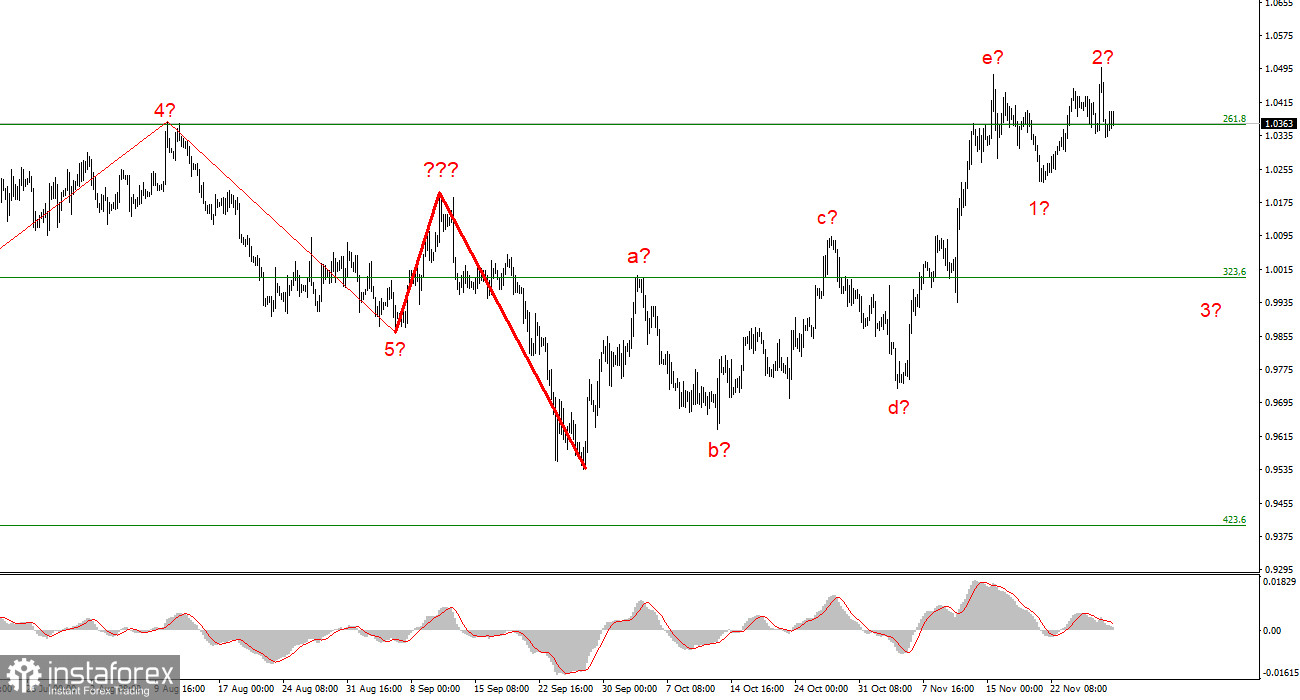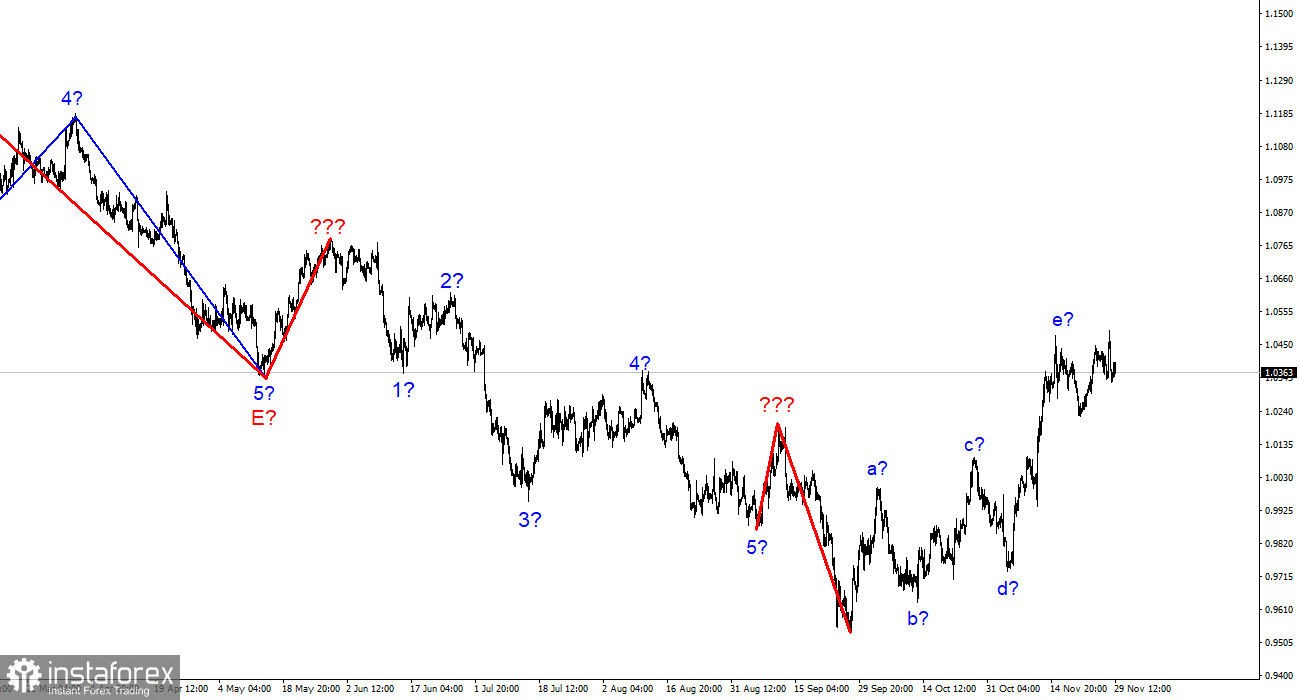
Although it still looks very convincing, the wave marking on the 4-hour chart for the euro/dollar instrument needs to be adjusted. The upward portion of the trend has corrected itself. A-b-c-d-e waves have a complex correction structure that we have discovered. Since the peak of wave e exceeds the peak of wave C, if the current wave layout is accurate, construction on this structure may be nearly finished or already be finished. In this instance, it is anticipated that we will construct at least three waves downward, but if the most recent phase of the trend was corrective, the subsequent phase will probably be impulsive. I am therefore getting ready for a new, significant decline in the instrument. The market will be ready to sell when a new attempt to breach the 1.0359 level, which corresponds to 261.8% Fibonacci, is successful. The wave e may end up being longer overall, and the instrument's most recent decline is not the first wave of a new descending section, as evidenced by the quotes' withdrawal from the lows reached last week and on Monday. The alleged waves 2 or b, however, might still exist because they only punctured wave e's peak. Because there isn't an increase in demand for US currency, the wave pattern is generally starting to become muddled.
There are intriguing performances, but there are still no reports.
The new week got off to a very active start for the euro/dollar instrument. The movements on Monday had a very high amplitude, but the instrument was unable to reach an upward potential at this time, so the wave marking is still intact. Representatives of the ECB and the Fed have recently provided a variety of information. I can't say that all of this information contradicts one another, but the market is currently nervous and lacks a clear plan for what to do next. Recall that the current wave markup appears almost entirely clear and calls for the creation of a downward wave. But this wave cannot be built if the demand for US currency does not rise.
Yesterday afternoon, the St. Louis Federal Reserve's president, James Bullard, delivered a speech. Bullard is regarded as one of the toughest "hawks," and his rhetoric frequently raises interest in US currency. Exactly that is what we might have witnessed yesterday. Bullard predicted that once the rate exceeds 5%, it will remain extremely high throughout 2023 and a portion of 2024. He thinks that the market continues to undervalue the full impact of high inflation and the necessity for long-term tight monetary policy. Bullard emphasized that "inflation will not slow down by itself." Additionally, the rate increase in December was not discussed by the president of the St. Louis Federal Reserve. Everyone agrees that the Fed will increase interest rates by 50 basis points at its next meeting, but Bullard could have been counted on to support a 75-point increase. Regardless, his rhetoric was in favor of the US dollar, but it now needs to build on this success.
Conclusions in general
I conclude that the upward trend section's construction is complete and has increased in complexity to five waves (or is nearing its completion). As a result, I suggest making sales with targets close to the estimated 0.9994 level, or 323.6% Fibonacci. There is a chance that the upward section of the trend will become more complicated and take on an extended form, but this chance is currently no greater than 10%.
The wave marking of the descending trend segment noticeably becomes more intricate and lengthens at the higher wave scale. The a-b-c-d-e structure is most likely represented by the five upward waves we observed. After the construction of this section is finished, work on a downward trend section may resume.






















